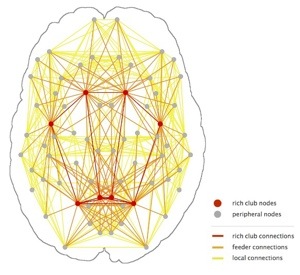Women have been encouraged to take folate supplements during pregnancy since the early 1990s, but a new study suggests that men may also need to avoid folate deficiency for the sake of their future children.
“Currently prevention of birth defects is directed at the mother yet the male contributes 50 percent of the heritable information,” says Sarah Kimmins, associate professor of reproductive biology at McGill University and principal investigator of a new study published December 2013 in Nature Communications. “This mode of thinking that it’s all up to the mother to ensure the health of the offspring is outdated, as research is suggesting that a father’s reproductive health may be equally as important.”
In their study, Kimmins and her colleagues explored how reduced dietary folate, also known as folic acid or vitamin B9, might affect male mice and their offspring. Folate is known to influence DNA methylation, the addition of a group of atoms containing one carbon and three hydrogens to the region of a gene that determines whether it is turned on or off. Through changes in DNA methylation, environmental factors, such as diet, are capable of causing changes in gene expression without altering the genetic code. These changes, called epigenetic modifications, can be passed from one generation to the next.
“This epigenetic information is dynamic and, unlike your DNA, can be altered by what you eat, smoke, and possibly even fear and stress,” says Kimmins.
The authors first exposed male mice to either a folate-sufficient diet, with the normal amount of folate a mouse needs to be healthy, or a folate-deficient diet, with only 14 percent of the normal amount of folate, from before birth through adulthood.
They then examined the reproductive health of these males and found that the folate-deficient mice had reduced fertility and that their offspring were less likely to survive as embryos. Additionally, the offspring of folate-deficient mice displayed developmental abnormalities, ranging from skeletal malformations in the skull, spine and limbs to muscular defects.
They also found 57 gene regions with altered methylation in the sperm of folate-deficient mice. Interestingly, these changes occurred primarily in genes related to development, the function of the brain and other organs, as well as genes associated with cancer and neurological conditions, such as autism and schizophrenia.
Furthermore, these epigenetic changes were transferred to the next generation of mice. The authors found that hundreds of genes within the placentas from the offspring of folate-deficient mice were expressed differently from those of folate-sufficient mice. Importantly, two of these genes were part of the original group of 57 genes that demonstrated altered methylation patterns.
These findings suggest that the sperm epigenome may be modified by the paternal diet, and that the effects of these changes have the potential to be passed onto future offspring. However, a mechanism behind the effect of diet on sperm DNA methylation is not yet clear, and there is the potential for alternative explanations of the findings.
“It may be speculated that some of the developmental defects observed in their study can be the result of inappropriate cellular metabolism and not necessarily an affected methylome,” says Rocio Rivera, assistant professor of developmental epigenetics at the University of Missouri.
This study also provides support for the idea that offspring are vulnerable to environmental conditions experienced not only by their mother during pregnancy, but also by their father before conception. Another recently published study has also demonstrated epigenetic changes related to paternal experience, in which fear associated with a specific scent was transferred from a male mouse to his offspring and even his grand-offspring.
Additionally, the altered gene expression and birth defects observed in the offspring of folate-deficient mice demonstrate a potential role of paternal folate levels in development. Although this study examined mice, the findings indicate the need for exploring the effects of folate deficiency in men.
“Even if a man eats enough folate, if he is overweight, or obese, or has a genetic mutation in an enzyme in the folate pathway . . . there is strong possibility that the sperm epigenome will be abnormal much like we saw in the mouse model,” says Kimmins.
In future studies, Kimmins and her colleagues plan to study folate levels in normal weight, overweight and obese men and follow the development of their children. Although the motherly reminder to take vitamins seems clichéd, it may turn out that folate supplements and good overall health may be just as important for future dads as it is for future moms.
References:
Lambrot R., Xu C., Saint-Phar S., Chountalos G., Cohen T., Paquet M., Suderman M., Hallett M. & Kimmins S. (2013). Low paternal dietary folate alters the mouse sperm epigenome and is associated with negative pregnancy outcomes, Nature Communications, PMID: 24326934
Dias B.G. & Ressler K.J. (2013). Parental olfactory experience influences behavior and neural structure in subsequent generations, Nature Neuroscience, PMID: 24292232
{This post was originally submitted as part of my application for the 2014 AAAS Science & Technology Mass Media Fellowship.}
 In addition to learning about autism awareness in Singapore, I got a lot out of the International Meeting for Autism Research, held a few weeks ago in Atlanta. I wrote a post for the Autism Science Foundation blog in which I share some of the major themes discussed at the meeting. Head on over to the ASF blog if you want to check it out!
In addition to learning about autism awareness in Singapore, I got a lot out of the International Meeting for Autism Research, held a few weeks ago in Atlanta. I wrote a post for the Autism Science Foundation blog in which I share some of the major themes discussed at the meeting. Head on over to the ASF blog if you want to check it out!
![Image by Christoph Bock (Max Planck Institute for Informatics) (Own work) [CC-BY-SA-3.0 (http://creativecommons.org/licenses/by-sa/3.0)], via Wikimedia Commons](https://neurolore.files.wordpress.com/2014/05/dna_methylation.jpg?w=300&h=225)




